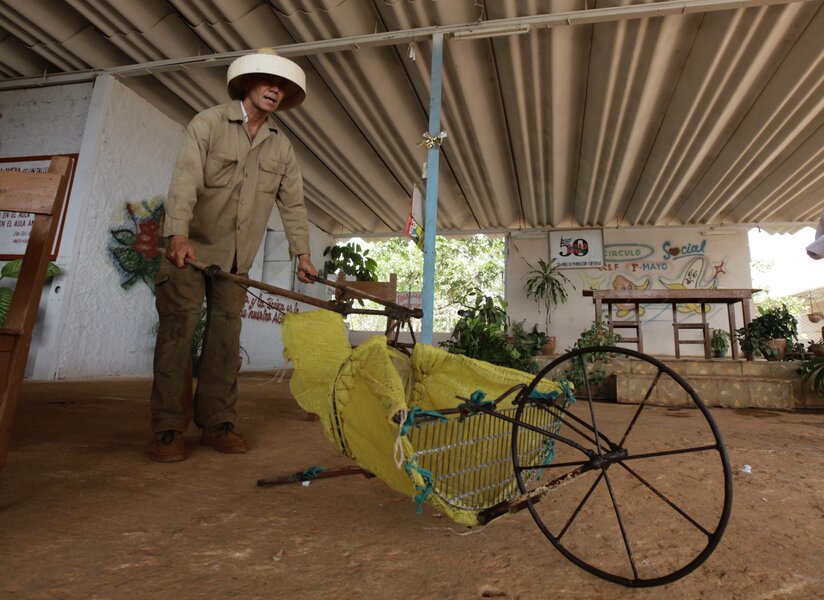In business or philanthropy, the key is treating people as valued 'clients'
Loading...
Can manufacturing products for the developing world be a helpful way to lift people out of poverty? Can impoverished people become lucrative customers?
Recently, Miller-McClune posted an article called "Save the Poor by Selling Them Stuff – Cheap." The article covers a business class taught by Stanford Professor Jim Patel, in
which students design a product intended to help the developing world, then sell it to the people in need. The article explores the question of whether this can be an effective way to address global development. Can making a profit and helping others coexist? Should it replace traditional philanthropy?
Here's my response:
Selling products to the impoverished community is a wonderful idea and part of a grander plan: a plan to help obliterate poverty, by engaging the community with entrepreneurs.
The ideas here hold great power; and how they are executed will hold incredible importance. What I love and recommend is exactly what the students are doing, at the inception: they are going into the community, caring, listening, and establishing a true understanding of the community's needs. That's all good.
This process then needs to be taken further. When the students return to the lab, the ideal process is that one – at least one – of the villagers comes with them.
Villagers need to be a continuing part of the design of the product, an official part of the product design team. This means from Day One until completion. And when the product is implemented, they are the key point people that inform the other product designer of any improvements or changes. What is not working structurally? Is it due to material conditions, such as weather, climate, soil? Or equally important is it due to cultural ramifications where the product might violate an important part of the rituals of the community?
Just because a product works -- doesn't mean it works culturally.
So as Professor Patell wisely states, creating products "means treating [the villagers] as equals." This is true, and to really implement this idea with equality, the villagers, at least three – are engaged in the process the entire time. Where are the check-ins, the testing, the continuous feedback loop, and quality control across effectiveness, price adoption and culture? So developing a product can treat the community as equals -- and just as much so alienate them if you don't include them. Keep the community you are engaging involved in the entire process.
How can one practically do that? It's hard with the distance, to be sure. But if you "can't bring the villager home," then hopefully there is some type of online access to video
with them, or at least via email. If that technology is not available, cell phones usually are. They are your customers – get them on the phone repeatedly with consistent feedback
provided.
The ideal lab development, of course, is in the community. You develop the product right there. You have several different members of the community testing it out at all points. You can take it to the land, the home, the village and get real feedback and results.
Of course the likelihood of having a high-tech lab and manufacturing facility is low. But that's the goal we eventually want to get to: true engagement, from start to finish, in
designing the product. Just as the Stanford students started, they need to "middle," "end," and continue the conversation with community members' involvement.
Professor Patell is right on to forge ahead with these ideas. We can't wait for perfection. No business should. You start with the best you can do and continue to improve it.
But imagine the world above where products are developed in the community, by the community. It will happen.
That's the stage of development we really want to get to with local communities. They are the innovators, the designers, the producers, and the executors. At some point, the
communities won't need the outside students and businesses, as it should be.
Patell says about treating people as equals: "Charities don’t have to do that.”
Perhaps, but neither do businesses. As far as treating people as equals, that goes down to an individual mindset. Businesses and charities both must be involved, be excellent listeners, and engage the community in every part of the process. Charities also play an important role donating money and providing volunteers, filling unmet needs in the marketplace as it continues to grow.
Business ideas are critical. So is philanthropy. As capitalism thrives, it will provide wonderful opportunities. Both are needed to help our world flourish.
• Pamela Hawley is the founder and CEO of UniversalGiving. She is a social entrepreneur who has founded two successful ventures and is a global leader in philanthropy, entrepreneurship, and corporate social responsibility. She is a Jefferson Award winner, a recent finalist for Ernst and Young’s Entrepreneur of the Year Award, an Expert Blogger on corporate social responsibility for Fast Company, and has been invited to the White House for its Consortium on Next Generation Leadership and Social Innovation.





